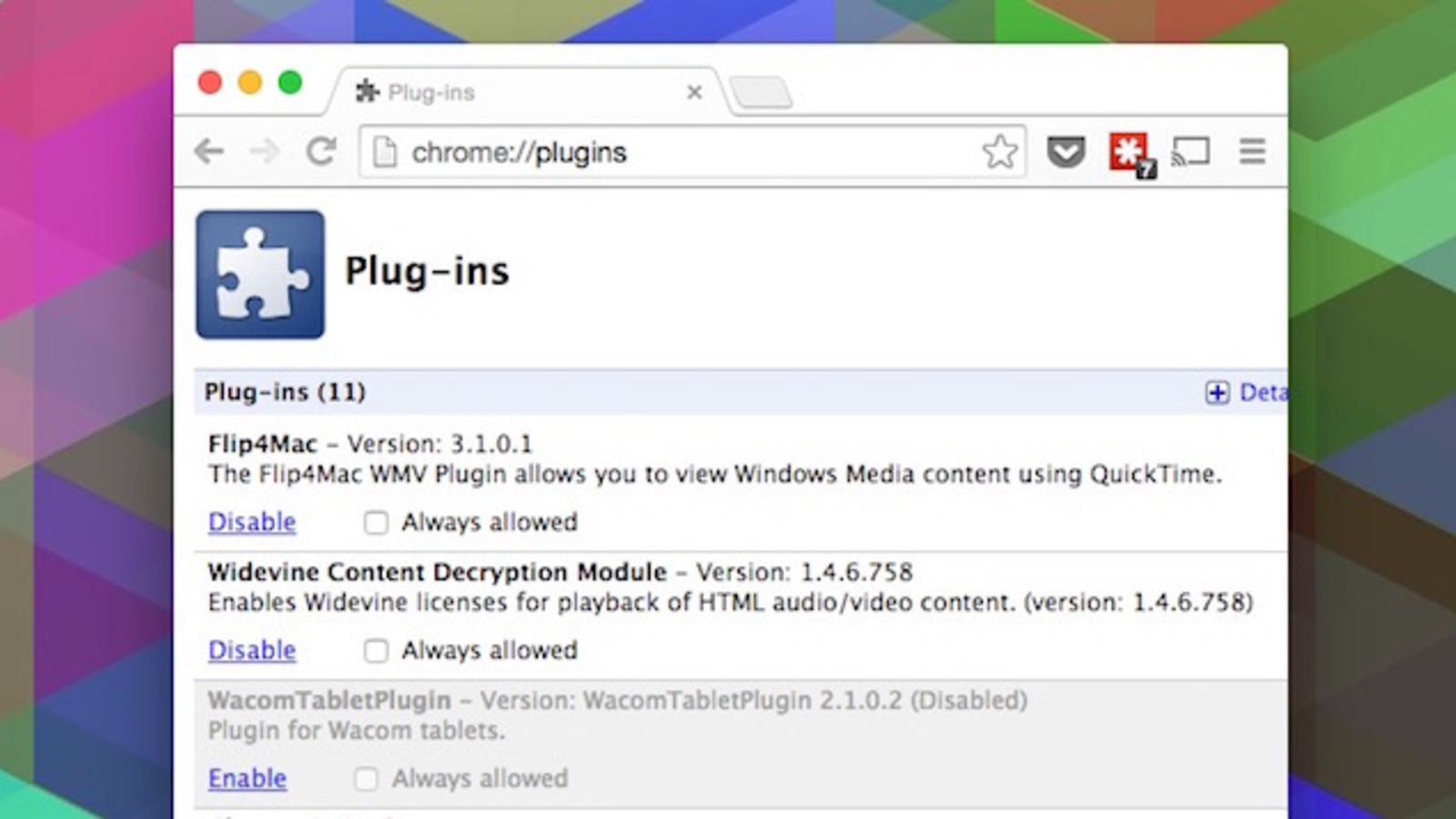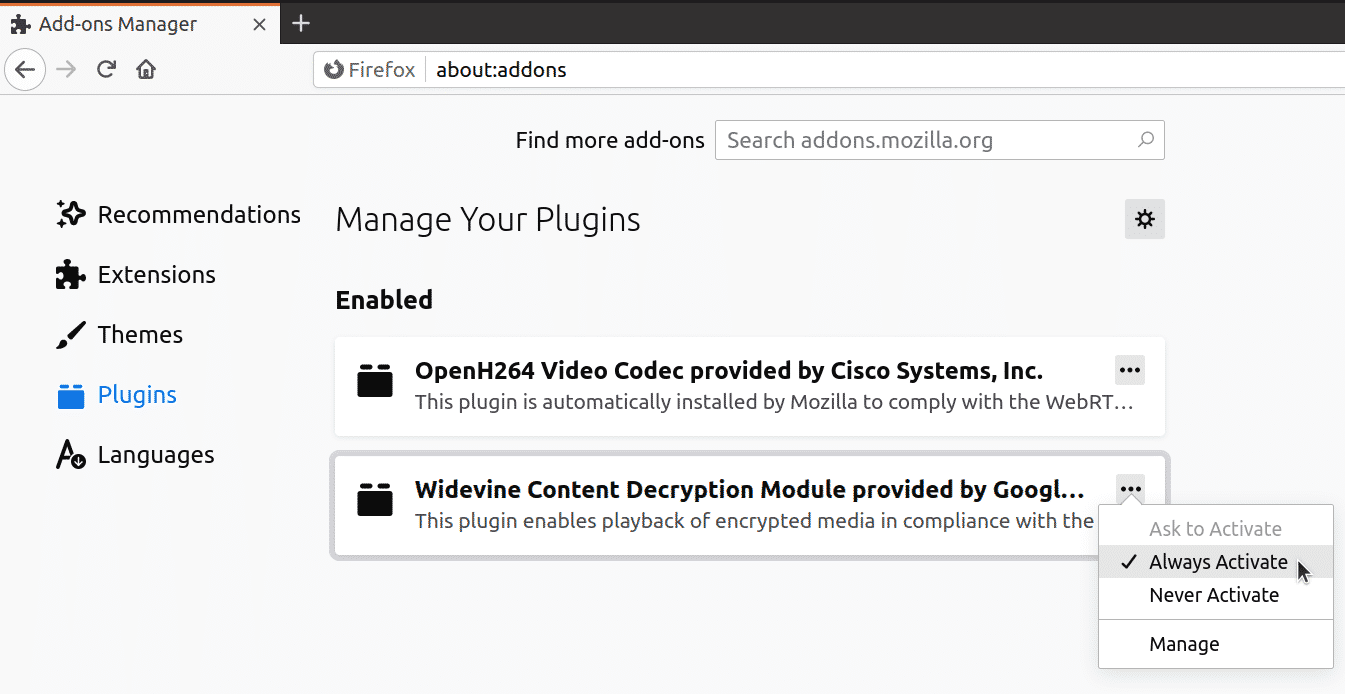Widevine Content Decryption Module (WidevineCdm) is a decryption module built into Chrome browsers, which enables Chrome to play DRM-protected HTML5 video and audio. With this plugin, you can watch DRM-protected HTML5 audio and video in Chrome such as Netflix. This free Mac app is a product of Google. The Widevine Media Optimizer installer is commonly called widevinemediaoptimizer.dmg. The application relates to Internet & Network Tools. WIDEVINECDM.DLL is regarded as a hijack virus injected in potentially unwanted program (PUP), which is acquired when you download and introduce freeware from dark sites. You can’t know about this when it is going on.
WIDEVINECDM.DLL
WIDEVINECDM.DLL is a Trojan horse and can camouflage itself well. It is not a agreeable items for computer you will realize after you have it for long. And it may cause more damage beyond your expectation.
WIDEVINECDM.DLL will enter your PC silently. Bunches of things can make it happened, for example, spam email, porn sites, malware, fake links, et cetera. Furthermore, it can invade in your PC with one of them. Also, when WIDEVINECDM.DLL triumphs in getting inside your PC, it starts to takes up the surface as an ordinary records, for example, jpg, txt, doc, or HTML. Therefore, when you discover a few suspicious stuffs showing up, you have reasons to check your PC instantly.
As a typical Trojan, WIDEVINECDM.DLL have no doubt to bring in virus on your PC and blind your eyes since the virus reveal themselves. When you are conscious what have happened, it is too late. And normally it is not easy for common users to get it uprooted since WIDEVINECDM.DLL is very good at anti-removed. Under this circumstance, we draft some very useful guides here with our rich experience to deal with such situations. Please check them.
Main symptoms of WIDEVINECDM.DLL infection:
1.It displays annoying ads and redirect pop-up every time you surf the Internet
2.It can change your homepage by altering your browser settings
3.It shows fake alerts on your screen to cheat you buy rogueware or scam tech service
4.It will redirect you to other dangerous websites containing severe threats
5.It may be used by virus maker to send more infections to you; for example, Bdbicextractor.exe Malware
6.It violates your privacy with help of Spyware which gets your sensitive information
7.It makes your computer speed become slowly and sometimes crash down your system
WIDEVINECDM.DLL Removal Process
Part 1. Manually Remove WIDEVINECDM.DLL on Windows OS
Part 1. Manually Remove WIDEVINECDM.DLL on Windows OS
(Some of the steps will likely require you to exit the page. Bookmark it for later reference.)
Step 1 – Uninstall malicious programs from Control Panel.
- 1. Press “Windows key + R key” together to open Run window
- 2. Input “control panel” in Run window and hit Enter key to open Control Panel
- 3. Click Uninstall a program:
- 4. Right-click programs which may be related with WIDEVINECDM.DLL and click Uninstall:
More information about SpyHunter, steps to uninstall, EULA, Threat Assessment Criteria, and Privacy Policy. |
Step 2 – Remove malicious extensions from web browsers.
(NOTE – Please Bookmark This Page because some operations may restart or close your system or web browser)
Chrome
On Chrome: Launch up Google Chrome> click Chrome menu > click Tools> click Extension> select extensions which may be related with WIDEVINECDM.DLL> click trash bin
Firefox
On Firefox: Open Firefox, navigate to browser menu in the top right > select Add-ons > select add-ons which may be related with WIDEVINECDM.DLL> remove it with Disable or Remove button.
Internet Explorer
On IE: Open Internet Explorer >click Tools > click Manager Add-on Tools and Extensions> select extensions which may be related with WIDEVINECDM.DLL > click Remove or Disable button.
Microsoft Edge
On Microsoft Edge: (Reset default homepage and search engine to remove WIDEVINECDM.DLL associated hijacker)
(NOTE – Please Bookmark This Page because some operations may restart or close your system or web browser)
Reset Edge homepage: Click More (…) > click Settings > select A specific page or pages under “Open with” > select Custom to type your favorite website.
Reset Edge search engine: Click More (…) > click Settings > Click View advanced settings > Click <Add new> under “Search in the address bar with”> type your favorite search engine >click Add as default.
More information about SpyHunter, steps to uninstall, EULA, Threat Assessment Criteria, and Privacy Policy. |

Step 3 Find and remove malicious registry entries of WIDEVINECDM.DLL or malicious program.
Note – In case any suspicious files, unwanted program, unwanted browser extension, or unwanted search engine cannot be removed manually, it is often caused by malicious program, which may adds files to registry or make changes in registry . Therefore, to uninstall such stubborn items, you need to find and remove malicious files in the Registry Editor. Check the steps below:
1. Press “Windows key + R key” together to open Run window;
2. Input “regedit” in Run window and hit Enter key to open Registry;
3. Click Edit menu and select Find >> Type virus’s name into it and click Find Next >> Right click on the files and click Delete (Only If you can determine that they are related with malware):
More information about SpyHunter, steps to uninstall, EULA, Threat Assessment Criteria, and Privacy Policy. |
Step 4 – Disable Notifications of suspicious websites on Web Browsers.
If some unwanted pop-ups or ads still appear on web browser, please try to disable their Notifications on all web browsers:
Edge
On Microsoft Edge
- Launch Edge browser
- Click on menu button of Microsoft Edge
- Click Settings
- Click “View advanced settings”
- Click “Manage” under “Website permissions”
- Find the unwanted URL and click the X (Clear) button to remove the URL.
Chrome
On Google Chrome
- Click the three-dots Menu button on the right upper corner
- Click “Settings” >> Scroll down to the bottom and click “Advanced“
- Click on “Content settings” in the Privacy and Security section
- Click “Notifications“
- Find the unwanted URL >> Click the three dots next to the URL >> click “Block” or “Remove“
Firefox
On Firefox
- Launch Firefox
- Click the Menu button (three bars) on the right upper corner >> Select “Options“
- Click on “Privacy & Security” on the left hand side of the screen
- Scroll down to the “Permissions” >> Click the “Settings” button next to “Notifications”
- Find the unwanted URL >> Click the drop-down menu and select “Block“
IE'
On Internet Explorer
- Launch IE
- Click the Gear button on the right upper corner >> Select “Internet options”
- Click “Privacy” tab and click “Settings” under “Pop-up Blocker” section
- Find the unwanted URL and Click the “Remove” button
NOTE – If the instructions above do not work, please download SpyHunter Anti-malwareto scan entire system.
Step 5 (Optional) – Reset Web Browser Settings
Edge
On Microsoft Edge

- Click the three horizontal dots icon >> Select Settings.
- Click the “Choose what to clear” button
- Click Show more >> Select everything >> click the “Clear” button.
Chrome
On Google Chrome
- Click the Chrome menu icon >> Select Settings
- Scroll down to the bottom and click the Advanced
- Scroll down to the bottom >> Click the Reset button
Firefox
On Firefox
- Click the Firefox menu at the top right corner >> click Help
- Select Troubleshooting Information
- Click the “Refresh Firefox” button
IE
On Internet Explorer
Click on the gear icon >> Click “Internet Options”
Select the “Advanced” tab >> Click “Reset”button
NOTE – If the instructions above do not solve your problems, please download SpyHunter Anti-malwareto scan entire system.
Part 2. Manually Remove WIDEVINECDM.DLL on Mac OS
(Some of the steps will likely require you to exit the page. Bookmark it for later reference.)
Step 1.Quick malicious process.
- Click the Go button and select Utilities folder;
- Locate the Activity Monitor icon on the screen and double-click on it
- Under Activity Monitor, find a suspicious-looking process, select it and click Quit Process
- A dialog should pop up, asking if you are sure you would like to quit the troublemaking process. Select the Force Quit option
More information about Combo Cleaner, steps to uninstall, EULA, and Privacy Policy. |
Step 2.Uninstall malicious programs from Mac.
Open the Finder >> Go to the Applications folder >> Find out malicious apps and Click Move to Trash >> Enter your password if requested.
Step 3. Delete malware-generated files in the following folders:
/Library/LaunchAgents folder;
Library/Application Support folder;
~/Library/LaunchAgents folder;
/Library/LaunchDaemons folder;
/Library/LaunchAgents
– In Finder, choose “Go” then click on “Go to Folder“:
– In the Go to Folder… bar, type: /Library/LaunchAgents:
In the “LaunchAgents” folder, look for any recently-added suspicious files and move them to the Trash. Here are some examples of malicious files generated by malware:
WIDEVINECDM.DLL, “com.WIDEVINECDM.DLLDaemon”, “com.WIDEVINECDM.DLL, “com.WIDEVINECDM.DLL.plist”, “com.adobe.fpsaud.plist” “installmac.AppRemoval.plist”, “myppes.download.plist”, “mykotlerino.ltvbit.plist”, etc.
Library/Application Support
– In Finder, choose “Go” then click on “Go to Folder“:
– In the Go to Folder… bar, type: Library/Application Support:
In the “Application Support” folder, look for any recently-added suspicious files and move them to the Trash. Here are some examples of malicious files generated by malware:

WIDEVINECDM.DLL, “com.WIDEVINECDM.DLLDaemon”, “com.WIDEVINECDM.DLL, “com.WIDEVINECDM.DLL.plist”, “com.adobe.fpsaud.plist” “installmac.AppRemoval.plist”, “myppes.download.plist”, “mykotlerino.ltvbit.plist”, etc.
~/Library/LaunchAgents
– In Finder, choose “Go” then click on “Go to Folder“:
– In the Go to Folder… bar, type: ~/Library/LaunchAgentst:
In the “LaunchAgentst” folder, look for any recently-added suspicious files and move them to the Trash. Here are some examples of malicious files generated by malware:
WIDEVINECDM.DLL, “com.WIDEVINECDM.DLLDaemon”, “com.WIDEVINECDM.DLL, “com.WIDEVINECDM.DLL.plist”, “com.adobe.fpsaud.plist” “installmac.AppRemoval.plist”, “myppes.download.plist”, “mykotlerino.ltvbit.plist”, etc.
/Library/LaunchDaemons
– In Finder, choose “Go” then click on “Go to Folder“:
– In the Go to Folder… bar, type: /Library/LaunchDaemon:
In the “LaunchDaemon” folder, look for any recently-added suspicious files and move them to the Trash. Here are some examples of malicious files generated by malware:
WIDEVINECDM.DLL, “com.WIDEVINECDM.DLLDaemon”, “com.WIDEVINECDM.DLL, “com.WIDEVINECDM.DLL.plist”, “com.adobe.fpsaud.plist” “installmac.AppRemoval.plist”, “myppes.download.plist”, “mykotlerino.ltvbit.plist”, etc

More information about Combo Cleaner, steps to uninstall, EULA, and Privacy Policy. |
Step 4. Delete malicious extensions From Safari / Chrome / Firefox.
Safari
Open Safari >> Click Safari menu button and choose Preferences >> Select the Extensions tab >> Select the suspicious extension and click Uninstall.
Firefox
Open Firefox >> Click the menu button >> select Add-ons >> Determine the suspicious or unwanted extension, click the Disable or Remove button.
Chrome
Run Chrome >> Click the three-dot menu button in the upper-right corner >> Select the More Tools >> Click Extensions >> Determine the suspicious or unwanted extension, click on the Trash icon >> Click Remove
Step 5. Use Combo Cleaner to re-diagnose your Mac and see if it is 100% clean:
To make sure that your system is not infected at all, it’s better to run a scan with Combo Cleaner Antivirus and see if it will detect any remaining unwanted items:
More information about Combo Cleaner, steps to uninstall, EULA, and Privacy Policy. Free scanner checks if your computer is infected. To remove malware, you’ll need to purchase the full version of Combo Cleaner.
Widevinecdm Update Mac Download
– Once combocleaner.dmg installer is downloaded, double-click it to install;
Widevinecdm Plugin Crash Fix Mac
– Then launch Combo Cleaner and click “Start Combo Scan” button;
Widevinecdm Component Mac
– Combo Cleaner will scan your Mac for malware infections. Once the scan is completed, remove any found infections.